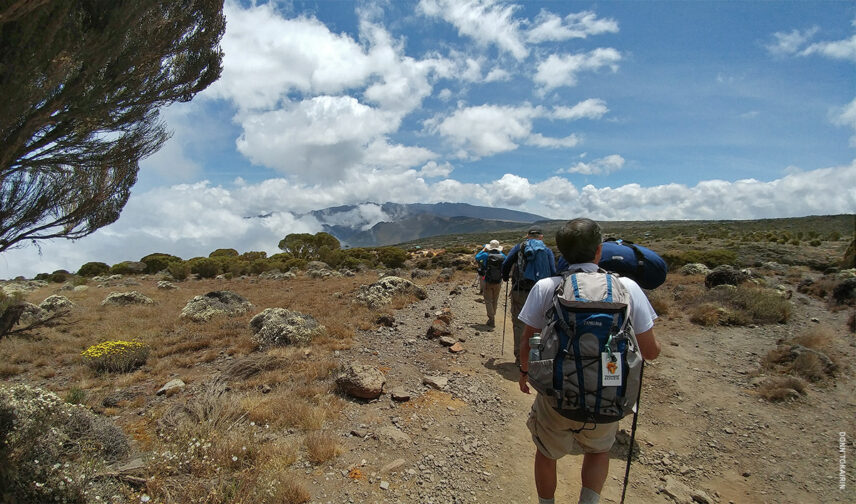We want to make sure Thomson trekkers are lined up for summit success, and a big part of that means climbing in optimal weather conditions. So, when should you climb Kili?
Though there’s not one “best month” to climb Kili, there are general guidelines we encourage our guests to follow:
- June – October: Cooler and drier
- December – March: Warmer with a chance of rain or snow
- April, May, and November: Heavy rains
The mountain’s immense height means its weather patterns don’t track 100% with the rest of Tanzania. No matter when you climb, it will be warm in the foothills and freezing at the summit. There could be rain or snow on the mountain any time of year, or it could be sunny the whole way up, regardless of when you set out.
It’s also important to note that trekkers pass through five different climate zones on the way to Uhuru Peak. Here’s what you’ll experience along the way:
- Cultivated areas: 70-90 degrees F during the day; 40-60 degrees F at night
- Rainforest: 70-90 degrees F during the day; 40-60 degrees F at night
- Heath & Moorlands: 50-70 degrees F during the day; 30-50 degrees F at night
- Alpine Desert: 30-40 degrees F during the day; 10-30 degrees F at night
- Arctic: 10-30 degrees F during the day; -10-20 degrees F at night
Trekkers experience all kinds of weather throughout their climb, and that’s why it’s important to layer appropriately no matter when you go.
